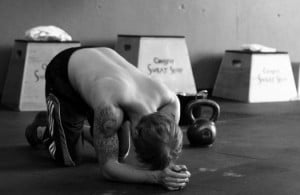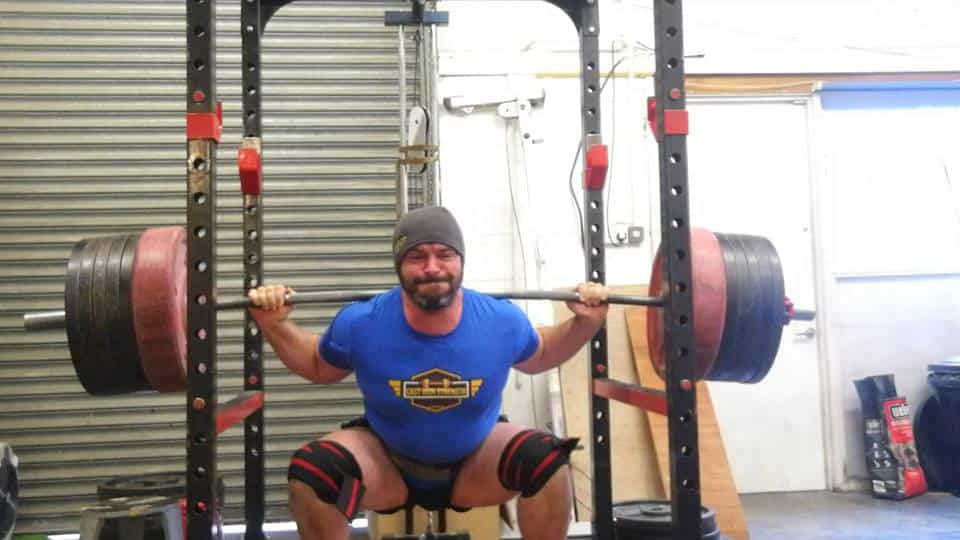I’m what you might refer to as a self made man in the gym pretty much for 90% of my 12 year lifting life I have written my own programmes and devised my own training plans. Along the way I have trained with some influential people who have directly affected my training practices and programming style but normally it’s from me makes a conscious decision to adopt there training. Only once in my lifting life have I completely let another man decided my training that was for 3-4 months under a local institution in the Edinburgh strength and conditioning community when I was interning with the Scottish institute of sport part of the process was to perform one of Neil’s Rugby programmes. It was a block perodised routine that started with a high volume work capacity phase (10s bleugh) then went into a series of 5s and strength focused mesocycles. That is probably the one time in my lifting life where I blindly followed the spread sheet.
Whilst I do write my training plans pretty much 4-6 weeks at a time if you have been following the operation 700 vlog series you will have seen that just because It is written down on the spreadsheet doesn’t mean it’s getting done. There are times in the last 4 weeks when I have either increased the intensity of the exercise, added volume or minuses workouts. This kind of flexibility I think is crucial as a lifter gets a bit longer in the tooth as it is a fine line between gaining in the gym like a demon and peaking out to the point where you need to take the guts of a month off because your too stiff and snapped up.
This is not a level of flexibility I would afford to the majority of lifters or athletes I work with since to be honest most people don’t actually know their bodies or can be trusted not to take the easy option it is human nature after all to take the path of least resistance and in the case of lifting this can literally be the case. When performing a heavy or intense volume (which is physiologically speaking fatigue) accumulating programme it can be hard to tell what is putting money in the bank and what is treading the hard path to snap city.
Harder isn’t nesscessarily better.
There are so many sayings in the world of lifting that are designed to inspire but end up with people taking a ridiculous stance when it comes to training in the gym where they think they need to be trying out of their skin or else they aren’t having a positive influence on their strength or fitness with is absurd.
“train insane or remain the same” has got to be the one that is the most reatarded it’s a good mantra for change alright if the change you want in your lifting is a herniated disc or to be bunt out. However, there are times in training when you are going to feel absolutely fucked since overload is nessicairy for progress in any exercise programme irrespective of the goal you need to tax you body. It can be difficult to know however how much fatigue is nessciairy and how much you actually want. Over time after a few injuries most athletes or lifters will begin to tweeze out what us exercise induced pain and what is snap city induced pain.
Even with something like managed a less than healthy shoulder joint it can be possible to feel acute pain when moving but know what is an acceptable amount of discomfort that will settle eventually and what is earth rendering pain that isn’t going to settle anytime soon. Luckily for you dear reader some of us have been through this process so you don’t have to in the future.
Signs the workout you are doing isn’t hard enough for you to progress.
- You fell fresh every time you enter the gym
- You feel fresh at the end of pretty much every gym session
- You don’t suffer from DOMs after any of your workouts
- Your joints and muscles feel great all of the time
- You’ve never been out of breath or sweated heavily after a set.
- You’ve never had “the fear”
Signs the workout you are doing is to hard for you to progress
- You are constantly tired and can’t really seem to sleep properly
- You can barely make it through a gym session due to a lack of motivation or being too tired.
- You can’t remember what it’s like not to be in pain.
- Your joints and muscles are stiff and sore all day everyday
- You get out of breath during warm up sets
- You fear every workout.
Basically you have above two lifters in two separate states one who is undercooked and not developing any fitness because they are under stimulating their bodies and the person who is overcooked or overreached this person has trained so hard for so long they are going from a state of overreach which can be a great pre-cursor to getting strong and are becoming over trained.
If you recognise some of these feelings then you probably need to adjust your training routine doing so on the fly however can be difficult if your not experienced. Here are some simple adjustments you can make to a programme to help you to get more out of your training.
Making a programme harder.
When increasing the difficulty of a session it is important that you induce changes that aren’t going to make the session too difficult or make it more of an overreach then it should be also it is important that you don’t get too cocky and end up missing reps since not only does this induce a huge amount of fatigue but it can be detrimental to your psycology which is extremely important.
- Adding weight to the bar. Sometimes the most obvious way to increase the difficulty of a session is to just add some weight. It could be the programme is set to too low a max and the session is meant to be 70% for 5 sets of 5. If you maximum is 200 kg say this would mean 140 kg x 5 x 5 which might be to light for you to get any training stimulus out of it. Simply by adding 5-10 kg you can take this same workout and have it adjusted to a level where you can get some benefit from it.
- Adding volume. Maybe in the same scenario where that 140 kg x 5 x 5 is much to easy but you like the feeling of moving the weight quickly and being able to boss your technique you may find adding a couple of reps to each set makes it a much more worthwhile endeavour. 5 sets of 7 at the same intensity but with the added volume allows you to still boss the weight but get a bigger strength stimulus.
- Reducing the rest periods. If you are in more of a preparation phase in training and don’t mind being a bit tired something as simple as going from 3-5 minutes’ rest to 2 minutes can make the exercise much more difficult and could be a great way of developing your work capacity in preparation for more intense training phases.
- Adding chains or bands. This is an extremely easy way of overloading the movement whilst keeping the programming the same the added acceleration to the bar especially with chains can really aid with getting any weaknesses in your technique ironed out as well.
- Chose a less efficient variation. The workout might be too easy for bench press, deadlift or back squat but you can make it more difficult and maybe get something different out of the workout from a technique development and strength development perspective by doing incline bench press, deficit deadlift or front squat.
These changes should be made on an ad-hoc basis if you are feeling really fresh for a workout and want to make it more challenging so you can get more out of it try some of the above methods. If you are finding this is a very common trend with your current programme you might need to look at your whole training cycle in more detail and address some issues.
Making a Programme Easier
The reverse of making a programme harder is to try and recover from the levels of fatigue you are currently suffering from. You don’t have to feel like crap to get stronger as Mike Tuechener of Reactive training systems recently showed in his project momentum experiment with power lifters the lifters who felt fresh before sessions made the best progress and accrued the least injuries a pretty good combination I would suggest. Here are some ways to lighten the load
- Take weight off the bar. Again sometimes the easiest way to do something is the best if a workout is set too heavy for how you are feeling or you aren’t up to it that day then reducing the working load 5-10% can make it challenging that day but also make it a much more appropriate load to try and build a bit of momentum.
- Take away volume. Taking a 5×5 workout that is set at a load which would represent too much for you on the day of training and turning it into a 5×3 workout (taking 2 reps off every set) reduces the total volume by 40% and means you will accrue much less fatigue through the sets which means you can try and concentrate on really nailing the reps you are performing.
- Increase the rest periods. Sometimes a programme has pushed you to a place where you are now doing sets and reps with loads that would have been a personal best not that long ago. In this scenario if you have the determination and will power to work through your sets then you can need the extra rest to muster your resources for the next big set!
- Add a reverse band or sling shot. You can add mechanical aids to your workout to help you through and let you still complete the work adding something simple like a belt can be all you need to get through. Also you can get a bit funkier and add reverse bands to any squat, band or deadlift variation to make it easier. For the bench press you can utilise a sling shot or for squat you can even chuck on a set of knee wraps.
- Chose a more advantageous exercise. Sometimes you can be so stiff or sore that the thought of doing the full version of the lift can make you want to cry and run out of the gym. A very easy solution is to cut off the range box squat, board press and block deadlift are all very easy alternatives to make a full ROM workout not only bearable but also allow you to get something out of it rather than some more stiff and tight joints.
Again these should be ad-hoc changes that may be due to poor sleep, stressful times at your work or just for whatever reason not being your normal self that day. If you find your constantly battered or tired you should look more closely at your programme.
Hope this article has provided you with some ideas on how you can better self manage as a lifter and some methods you can utilise in the future to help you better tailor your programme to your recovery state.
Marc

















